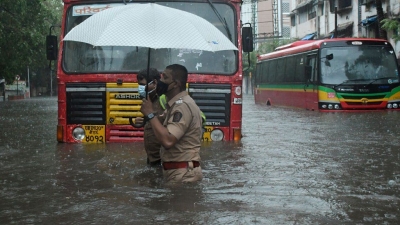
Even as the country was reeling under the devastating COVID impact, several states had to face the fury of nature in the form of cyclonic storms, floods, landslides and earthquakes. In one of the most tragic disasters in India, over 200 were either killed or went missing in the glacier burst in Uttrakhand’s Chamoli district on February 7. Assam witnessed a 6.0 magnitude earthquake on April 28, killing two and injuring over a dozen people. While Cyclone Tauktae which made landfall in Gujarat coast on May 17 killed over 170 people in regions such as Kerala, Karnataka, Goa and Gujarat. Cyclone Yaas hit Odisha on May 26, killing 20 people; mass evacuations from the coastal areas of Odisha and West Bengal resulted in saving a lot of lives.
Over 30 people died in landslides in Mumbai following torrential rains in July. Rains lasting several days triggered floods across Maharashtra in July, leaving over 250 dead and major rivers in spate. Telangana also witnessed flooding caused by heavy rain in low-lying areas. On October 16, flash floods caused by heavy rains in Kerala killed over 40 people, while a few days later heavy rains and landslides in Uttarakhand claimed 64 lives. Cyclone Jawad wreaked havoc across Andhra Pradesh, West Bengal and Odisha in the first week of December. Environmentalists have warned that climate change and indiscriminate construction in coastal regions could lead to more disasters.
The cyclone has been given the name ‘Tauktae’ (pronounced Tau’Te) by Myanmar. It means ‘gecko’, a highly vocal lizard, in Burmese dialect. The World Meteorological Organisation and UN Economic and Social Commission for Asia and Pacific (UN ESCAP) led Panel on Tropical Cyclones – a global body which also includes regional specialised meteorological centres (RSMC) as well as tropical cyclone warning centres — prepares the names of the cyclones.
Indian Meteorological Department (IMD) is among six RSMCs in the world, is mandated to issue advisories and name tropical cyclones in the north Indian Ocean region.
Picture Credit : Google




